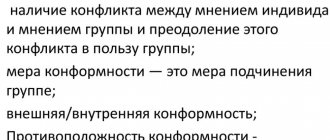Delinquent behavior is asocial, illegal behavior, which manifests itself in such actions that cause harm to society, threaten the lives of other people and the general social order, and are criminally punishable. Comes from the Latin “delictum”, which translates as “misdemeanor”. This concept determines the meaning of this behavior, that is, delinquent behavior is behavior that denotes an offense against society, against social norms and rules. Various sciences, mainly social ones, study this behavior, because, first of all, it is expressed in offenses that affect the person’s environment, and, in general, has a negative impact on the social order, and the state is built from each person, therefore it is very It is important that order is maintained; for this purpose, crime prevention methods are used.
Delinquent and criminal behavior have a connection with each other; more precisely, criminal behavior is a form of delinquent behavior, and in most cases a criminal case is opened against such an offender.
Delinquent behavior is directly aimed at violating government norms and laws. In most cases, a teenage criminal is considered a delinquent, and when he reaches adulthood, he is called an antisocial person. The behavior of a delinquent can be in the form of minor violations, then it is called antisocial. When violations reach the level of a felony, it is considered criminal. Not all deviant behavior is delinquent, but all manifestations of delinquent behavior are deviant. The older generation believes that in the modern world all teenagers and young people are criminals, and often attribute various kinds of offenses to them. But they do not understand that there is a big difference between young people who simply walk for a long time, listen to music loudly, dress extravagantly, have flashy makeup and hairstyles, and those who spend their leisure time together drinking alcohol, hooliganism, delinquency, promiscuity and communicating with using obscene language.
Delinquent behavior is behavior that has a number of characteristics. It is special in that there is no clear boundary where the offense begins. For example, an adult who evades paying taxes, lies to government workers, also acts illegally, but no one calls him a delinquent. The second feature of delinquent behavior is its strict regulation by laws, legal norms, and disciplinary rules. The third feature is that of all types of deviations, it is the illegal that is considered the most serious, since it poses a threat to public order. And one more feature of delinquent behavior is that it always means a conflict between one individual or group of offenders and the rest of society, more specifically, between individual interests and aspirations, and the direction of society.
Definition of the concept
Delinquency is a variant of deviant behavior. This phenomenon is interesting because there are no clear criteria by which it could be recognized. This social phenomenon is studied by various sciences:
- Pedagogy. In pedagogy, delinquent behavior is understood as the totality of an individual’s actions. The key point is that such behavior disrupts the normal functioning of the classroom or school community and threatens the safety of children or employees of the educational institution.
- Psychology. In psychology, delinquent behavior is such human actions that contradict legal, moral and ethical standards. The basis of such actions is the conflict of interests of an individual and the requirements of society, the state or a small social group. Psychologists are developing methods for diagnosing deviations and methods for correcting deviations.
- Social science and sociology. In these sciences, delinquent behavior is actions of an antisocial nature. Sociologists analyze the reasons for its occurrence and correlate them with certain historical features of the development of society.
- Law and criminology. From the point of view of jurisprudence, delinquent behavior is considered to be misdeeds, offenses, and socially dangerous acts of a minor citizen. Sanctions for them are contained in regulatory documents. This indicates that delinquent behavior is a form of criminal behavior. In other words, lawyers consider delinquency as a type of criminal action.
A delinquent is a person with delinquent behavior, and his antisocial actions are torts. A teenager who is prone to breaking laws, upon reaching 18 years of age, is considered a criminal.
As a result of a comprehensive study of the phenomenon of delinquent behavior in adolescents, its distinctive features were identified:
- the basis for the formation of such a model of life is the conflict between the individual aspirations of the individual and the interests of society;
- unlawful actions of an individual violate the usual way of social life and receive condemnation from society;
- such behavior violates the provisions of current legislation;
- it is difficult to establish the degree of responsibility of a delinquent, since there are no unambiguous criteria for classifying this form of deviation;
- organizations that combat delinquent behavior are correctional colonies for juvenile offenders, KDN and PDN.
Portrait of a person with delinquent behavior, examples from literature
A person with this type of behavior can be either a man or a woman. His main difference from the others is his isolation, a certain gloominess is possible. It often happens that the criminal is outwardly beautiful, which endears him to people. He is smart, suspicious, and may have childhood traumas.
Often in classical literature you can find heroes with delinquency, which is reflected in their actions. Thus, in his work “Lady Macbeth of Mtsensk,” Leskov tells the story of Catherine, who kills her father-in-law, husband, nephew, and a girl attracted by her lover. She also commits suicide at the end. This is a clear example of actions that deviate from the norm. It’s no secret that Rodion Raskolnikov from the novel “Crime and Punishment” is another representative of delinquent behavior: he kills an old money-lender and steals jewelry from her.
Differences between delinquent and deviant behavior
Delinquent and deviant behavior are variants of an individual’s protest against social norms and rules. Both of these models are condemned by society. The motive for deviant and delinquent acts is the individual’s desperate attempts to adapt to life in society and to achieve the desired socio-psychological status in the team. However, there are not only similarities, but also differences between these forms of behavior.
Deviant behavior is based on a violation of the cultural norms and rules of only one social group, so it is usually considered relative. Those actions that are perceived as immoral in one social group will be considered completely acceptable in another group. Everything depends on the cultural level of the social community in which these actions are performed. Delinquent behavior represents a violation not only of intra-group norms and rules, but also of state principles, therefore it is considered absolute. Moreover, the content of the concept of “deviation” is much broader than the content of the concept of “delinquency”.
The measure of permissible actions in deviant behavior are social norms and standards. There are no sanctions for deviations at the legislative level. The main method of correcting them is educational conversations with the teenager, explaining the negative consequences of his actions. The measure of permissible actions in delinquent behavior is the law. Sanctions for torts include administrative or criminal liability.
Thus, the main difference between delinquent and deviant behavior can be considered the severity of the consequences of illegal actions for the person who commits them and for the people around him.
Similarities and differences between the terms “deviance” and “delinquency”
Common features of deviance and delinquency:
- both terms imply deviation from generally accepted social norms. At the same time, people’s actions are compared both with legally established state norms and with informal behavioral guidelines;
- Both deviation and delinquency imply a person’s lack of desire to find his place in society, meet its requirements and comply with generally accepted rules.
If we talk about the differences between these terms, they are as follows:
- Delinquent behavior is human behavior that includes completely illegal actions. Vivid examples of delinquent behavior can be robbery, murder, any violent acts, fraud, and bullying. Delinquency includes primarily those deviations that carry legal consequences;
- Deviance is a broader concept that includes generally accepted deviations from socially approved norms.
In a narrow sense, deviant behavior may include offenses that do not entail criminal liability, and delinquent behavior may include administrative fines and criminal punishment.
Causes of delinquent behavior
The main reasons for the formation of delinquency are:
- increased migration and decreased level of economic stability in Russia;
- low level of legal culture of the population;
- the predominance of material values over spiritual ones;
- poverty;
- pronounced social and material inequality between people;
- low level of culture and morality in the teenager’s family;
- raising a child in a single-parent family, divorce of parents;
- death of a person significant to the teenager;
- mistakes in raising a child in the form of weak parental control, lack of punishment;
- childhood psychotrauma;
- physical violence against a child by parents;
- imperfection of the child’s psyche during adolescence
- the teenager’s desire to express himself, to assert himself in the company of friends;
- a teenager’s desire to seem like an adult, thirst for vivid impressions;
- poorly developed skills in establishing cause-and-effect relationships among schoolchildren;
- numerous scenes of violence and cruelty in the media;
- availability of pornographic materials to teenagers;
- degradation of personality, predominance of base instincts in a person;
- the individual has alcoholism or drug addiction;
- the presence of mental disorders or psychiatric diagnoses in the individual;
- difficulties in social adaptation of the individual;
- aggressiveness;
- increased personal anxiety;
- low self-esteem in a teenager;
- low socio-psychological status of the child in the group of peers;
- a teenager has a lot of free time;
- isolation of a teenager, voluntary social isolation;
- vagrancy;
- low intellectual level of personality development, narrowness of thinking;
- the individual has alcoholism or drug addiction;
- the teenager’s desire to earn money independently by any available means;
- the individual's desire to obtain pleasure in sophisticated ways;
- a teenager’s attempts to resolve conflicts and personal problems with the help of physical force;
- poor development of willpower, a teenager’s tendency to show conformity;
- the desire of people to get the desired material values at any cost;
- a teenager getting into an antisocial peer group;
As a rule, delinquent behavior is formed as a result of the simultaneous action of several negative factors.
Why teenagers become delinquent
Impunity is one of the reasons for this behavior
There are many reasons that can lead to this type of behavior. According to statistics, people from disadvantaged families are most often prone to this lifestyle. There are situations when teenagers and young people who live in abundance and have all the opportunities for a prosperous life scenario begin to behave in an illegal manner. Often the reasons are observed in combination.
Delinquents can become such for internal reasons. This is due to their moral attitudes and type of temperament. For example, choleric people are prone to such impulsive actions. Illegal behavior in society also leads to:
- addictions;
- increased or, conversely, decreased anxiety;
- various mental disorders that are transmitted genetically and much more.
External reasons that may prompt a teenager to commit such acts include:
- lack of funds;
- serious conflicts due to rejection in a certain environment;
- unfavorable social environment;
- changes in society, for example, crises and revolutions.
Lack of legal literacy may also be a factor. If teenagers know about serious criminal acts and understand that they can be sent to prison, then they may not even know about punishments for other categories of offenses.
The climate in the family and the parents’ approach to education influences many things
Often the reasons lie within the family. Negative factors that create a tendency towards this type of behavior include:
- various dependencies of one of the family members or all;
- permissiveness and indifference towards the child;
- overprotective control;
- conflict situation within the family, including the use of physical violence;
- parental divorce;
- lack of any educational measures and communication.
All of these factors, individually or in combination, can lead to a child feeling useless. Increasing internal resentment results in aggression. It is her child who directs it outward.
If, against the backdrop of such a picture within the family, a teenager falls into bad company, his risk of becoming a delinquent increases many times over.
Features of delinquent behavior in adolescents
Psychologists have found that delinquent behavior of adolescents has its own distinctive characteristics and signs. This:
- The prerequisites for the emergence of anomalies are the child’s assimilation of a distorted value system. A sign of the emergence of delinquency is the child’s denial of the authority of parents and teachers. The desire to oppose oneself to society is most pronounced among younger adolescents. This need, in the absence of explanatory conversations and psychological help, quickly develops into addiction.
- A wide range of actions that may be considered antisocial and threaten the life and health of people. In different countries, different offenses fall under the definition of torts, which is explained by differences in legal documents. The imperfection of the legislative framework leads to the fact that not all antisocial actions entail one or another type of responsibility.
- Illegal actions of adolescents today are considered one of the most dangerous types of delinquent behavior. Teenage violence results in disability and sometimes death for victims of violence.
- Adolescent delinquency is condemned in any society. The efforts of specialists in helping professions are aimed at developing effective measures to prevent delinquent and deviant behavior among minors.
- The determining factor in the development of delinquency becomes the living conditions of the individual. If a child does not receive love and affection in the family, when he comes to the company of his peers, he will broadcast negative emotions: resentment, aggression, anger, envy. If the family has not developed uniform requirements for the child, he does not have responsibilities at home, he will not learn to treat others with respect and care. Delinquency in this case will be a predictable reaction to a vicious circle.
- Teenagers are characterized by a group nature of committing illegal actions. When teenagers commit crimes together, their sense of impunity increases.
- The results of psychological research indicate that delinquent adolescents lack such significant social qualities as a sense of duty, responsibility, self-control, the ability to show sympathy, and conscientiousness. They have low self-esteem, many of them do not accept their own individual typological characteristics. They demonstrate a consumer attitude towards others.
- Statistics show that teenagers with a choleric type of temperament are more predisposed to committing torts.
During primary school age, delinquents run away from home, skip classes at school, and steal money from classmates or teachers. As they get older, delinquents try to sell psychotropic substances, extort money, and become initiators and accomplices of petty crimes on the street.
Delinquent behavior of adolescents
Delinquent behavior of minors arises under the influence of one experienced friend or a group of teenagers who are not even antisocial, but have bad habits. A company in which teenagers are not engaged in any serious business, sports, art or diligent study of lessons, are busy only with watching films, discussing them, going to stores, in shopping centers and it happens that they get bored and look for more an interesting activity that united their company, but they cannot imagine that it could be, for example, sports. From boredom and idleness, they begin to see a way out in alcohol and drugs, which, in general, gives rise to delinquent behavior. But, naturally, not all teenagers are delinquents. There are those who are not at all interested in and are not keen on such activities. Much depends on temperament, accentuation, and individual character traits, which may be a prerequisite for the emergence of delinquency. Basically, adventurism and aggressiveness, choleric temperament, and specific moral consciousness contribute to the development of delinquency. Such adolescents have special mechanisms for the functioning of their psyche, and for this reason they can be divided into three groups. Some of them, who can be called repentant, have primitive antisocial needs and certain moral rules. These needs are very strong, and under their pressure, the internal conflict is positively resolved in their direction, and the moral level decreases. But after what they have done, their conscience will torment them.
Another group of teenagers are those who do not have internal conflict, do not repent of their actions and are not tormented by their conscience. They do not have internal moral restraint, so at every opportunity they realize their desires and asocial needs, and often the actions they do cross the line of socially acceptable norms, which is why they become rejected from society. Often such teenagers act in a group and they have a leader, who often does not commit the crime himself, but only directs what others should do.
Delinquent behavior of minors from the third group is the most dangerous. They oppose the moral norms of society absolutely consciously. Their views are cynical and their needs are very strong. They easily cross the boundaries of what is permitted, they simply do not see them, and commit a crime.
It is believed that the socio-economic reasons for delinquent behavior in adolescents are very significant. The destruction of public culture and the displacement of spiritual values, ethical and aesthetic standards into the background, problems of economics and finance in the country, the development of the shadow economy, illegal business, population migration, the dissemination of materials containing violence, cruelty, pornography, luxury by the media. Teenagers are very much influenced by any factors and information, but if they are presented with this information in such a light that excites their consciousness and psyche, they delve into everything and absorb these stimuli with great interest. They also see a certain illusory ideology of society, and consider it true, and borrow it into their life. This specific ideology encourages and even justifies a criminal way of life. Therefore, having committed a crime, a teenager feels protected, he thinks that he has an excuse and denies his responsibility for what he has done, since he has no psychological or moral barriers left at all, he felt freedom of action when he saw in some film or program that crime justified.
The reasons for delinquent behavior in adolescents also lie in family relationships. Such behavior can be caused by relationships with parents, or rather inadequate, bad relationships. Because of a quarrel in the house, a teenager can run away from school, skip school, fight, or commit a hooligan act. And it is precisely all the most serious actions that are caused not by the gang to which the individual belongs and their values, but precisely because of a misunderstanding of his home. Sometimes it is not such an open conflict that precedes escape as, on the contrary, the indifferent and indifferent behavior of parents in the life of a teenager.
Teenagers love attention very much, they are dependent on it, and the manifestation of indifference towards them from their loved ones becomes very painful and unbearable for them. If there are two generations under the same roof of a house, and they pretend that they do not notice each other, but only coexist together, neither supporting nor helping each other, nor giving emotional warmth and love, then sooner or later we should expect a conflict in this home. It’s like a time bomb, one way or another, someone has to go off, and if there is a child in this family, then most likely the responsibility for this will be on him, as the most sensitive and impressionable of all living together. Then the child begins to seek refuge where he will be accepted, often ending up in those groups that should be ignored, but it is they who offer something that he is simply unable to refuse and this is precisely what allows him to forget about all the bad things, about everything that was at home and it turns out to be just what you need. Of course, this refers to drugs or alcohol. And from that moment the teenager breaks all family relationships, spiritual ties and considers his new friends as his family, with whom he has so much fun, and with whom he can do such bold things that he has never dared to do and feels satisfaction from this (vandalism, hooliganism) . According to some sociologists, it is in wealthy families that similar problems are observed. In families where people concentrate on making money, and a child is brought into the world so that when they can no longer do so, he will continue to earn money. In such families there are no relationships, they do not communicate and perceive it as such that it should be so, that it has been and will be so. This is a modern trend, and it is observed more in Western countries. If family conditions are unfavorable and adolescents deny generally accepted norms of communication and behavior, they are exposed to criminal influence.
One of the most important causes of delinquency is an underdeveloped or distorted moral consciousness. Having once felt the need for alcohol or sex, and satisfied their desire, they begin to desire it very often and in immoderate quantities. Both the wretchedness of these needs and the indiscriminate way of satisfying them also become the reason that the circle of acquaintances and friends with whom they previously communicated is very narrowed, even those who were close and neighbors no longer want to have connections with them. But new friends appear, with whom they share a common pastime in the party. They do not have socially approved interests, activities, and do not attend sports clubs or clubs. Even their classmates do not communicate with each of such a company, and they must form into gangs from the dregs of society.
Often, the tendency to delinquency arises when a teenager is not accepted either at home or at school. Although teenagers never show it, in fact, the opinion of teachers is very important to them, they perceive them as significant loved ones, especially those who they like very much and when they do not receive feedback and support, they feel sad at first, but then a reaction follows anger and this anger leads to aggressive actions.
The cause of delinquency may be a large amount of free time. Since most potential delinquents do not like studying and do not engage in hobbies, their leisure time is primitive and monotonous. They can be occupied with new information, easy, which there is no need to intellectually process, and the transfer of this information to peers. Empty conversation about nothing, walking around shopping centers without a goal, watching TV - these are the first steps towards personality degradation, followed by alcoholic drinks, gambling, drugs, toxic substances and others, which make it possible to experience a new impression.
There is an opinion that only extroverts who are oriented towards the external environment and people become delinquents, because it is easier for them to join groups. But there are also introverts, they act on their own, thus resolving their internal conflicts.
Adolescent development occurs very intensively and quickly, and prevention of delinquent behavior must be carried out in time to prevent the formation of antisocial personality tendencies. In carrying out preventive work, it is important to accustom adolescents to the psychohygienic requirements of behavior, the ability to make the right choice, in order to achieve the state of a socially competent person. Uncontrolled deviant behavior is delinquent and occurs in a person incapable of self-regulation. It is very important to begin the formation of personal and social maturity in adolescents with the development of positive self-esteem, accepting oneself in a positive light, developing the ability to think critically, the ability to set socially important goals and be responsible for one’s words and actions. In order for a teenager to learn to make adequate decisions and make the right choice, he must learn self-control over emotions, stress, aggression, his own state, and anxiety. Learn to resolve conflicts in cultural ways, without insulting or harming the enemy. Learn how to behave in the face of negative criticism, know adequate methods of self-defense. Be able to say “no” to yourself, resist bad habits and learn to respect your body and lead a healthy lifestyle.
Generally speaking, prevention is a system of public, state, social, medical, psychological and educational measures focused on prevention, neutralization of the main reasons and circumstances that act provocatively on the manifestation of social deviations in a teenager.
Prevention of delinquent behavior will be truly effective if it is applied on the basis of: good performance at school, an emotionally positive and satisfying system of relationships with others, mainly those closest and dearest, and an important component of psychological protection. Compliance with all necessary conditions will ensure the harmonious development of the individual and minimize the occurrence of delinquent tendencies.
Prevention of delinquent behavior also has three approaches. According to the first, the formation of deviations in psychophysical development is prevented. The second prevents the transition of developmental deviations to more chronic forms. The third approach is the social and labor adaptation of deviant individuals.
Social pedagogy of prevention sees scientifically based and timely actions taken that are aimed at: preventing all possible (biological, psychological, social) circumstances and conditions of minors who are at risk; protection, maintenance and preservation of an acceptable standard of living and good health of the adolescent; helping a teenager in his own achievements of socially significant goals and revealing his potential, abilities, and talents. There is also a list of preventive measures: eliminating, compensating, controlling preventive work and preventing circumstances that can cause social deviations. The effectiveness of such activities will be high if several components are included with them: a focus on eradicating the causes of internal conflicts in a teenager and in the social and natural environment, at the same time creating conditions through which the teenager will gain the experience he needs to solve individual problems; learning skills that contributed to achieving goals; preventing the emergence of problems and solving existing ones, learning strategies for resolving conflicts.
In general, in the prevention of delinquent behavior, two main approaches can be distinguished that can best and promptly raise a teenager into a noble person - education and training.
Forms and types of delinquent behavior
Delinquent behavior is usually classified according to types and forms. Common types of this anomaly are:
- Committing administrative offenses:
- petty hooliganism;
- smoking;
- violation of traffic rules;
- use of profanity;
- insulting another person;
- drinking alcoholic beverages in a public place;
- harassment;
- exhibitionism;
- begging;
- vagrancy;
- prostitution.
The provisions of the current legislation provide for corrective community service and fines for such acts.
- Disciplinary offenses:
- reporting to work under the influence of alcohol or drugs;
- being late for work;
- absenteeism;
- unauthorized early departure from work;
- violation of internal labor regulations at the enterprise;
- dishonest execution of job description.
For committing a disciplinary offense, a person faces an oral or written reprimand, reprimand, deprivation of bonus payments, dismissal or removal from his position.
- Crimes:
- organizing a terrorist attack;
- vandalism, desecration of structures;
- theft;
- robbery;
- murder;
- robbery for the purpose of profit;
- fraud;
- beatings;
- rape;
- distribution of narcotic drugs;
- extortion;
- car theft;
- animal abuse;
- bullying;
- inducing someone to attempt suicide.
The above examples of delinquent behavior emphasize the versatility and ambiguity of this concept.
In accordance with the provisions of the Criminal Code of the Russian Federation, from the age of 16, a citizen becomes fully responsible for committing certain illegal acts. And for certain types of crimes, responsibility begins at the age of 14.
Delinquent behavior is realized in the following forms:
- antisocial behavior, which is based on violation of the moral and ethical principles of society;
- actions of a non-violent nature (selfish actions, desire to obtain material gain through dishonest means);
- violent acts that result in physical injury to one person or group of people.
Delinquent behavior means a chain of misdeeds, infractions, minor offenses (from the Latin delinquo - to commit a misdemeanor, to commit a misdemeanor), which differ from crime, i.e. serious offenses and crimes punishable under the Criminal Code.
Delinquency usually begins with absenteeism from school and joining an antisocial group of peers. This is followed by petty hooliganism, bullying of the younger and weaker, and taking away small pocket money from children (in the slang of delinquent teenagers it is denoted by the expression “shake the money”; the child is forced to jump in order to hear, it won’t ring whether he has coins), stealing (for the purpose of riding) bicycles and motorcycles, which are then thrown anywhere. Less common are fraud, small illegal speculative transactions (“farming”), causing behavior in public places. This may include “domestic thefts” of small amounts of money. All these actions in minors are not grounds for punishment in accordance with the Criminal Code of the USSR and Union Republics, and in adults, such behavior is more often the subject of proceedings in comrades' courts and the reason for administrative penalties.
However, adolescents can exhibit greater delinquent activity and thus cause a lot of trouble. Typically, it is delinquency that is the most common cause of proceedings in commissions on juvenile affairs under local Soviets of People's Deputies.
Sometimes all these behavioral disorders are called “deviant behavior,” which does not accurately reflect the essence of the matter. Deviance - deviation from accepted norms - is a broader concept; it includes not only delinquency, but also other behavioral disorders - from early alcoholism to suicide attempts.
The overwhelming majority of adolescent delinquency has purely social causes - shortcomings in upbringing, first of all. From 30 to 85% of delinquent adolescents, according to various authors, grow up in an incomplete family, that is, without a father, or in a deformed family - with a newly appeared stepfather or, less often, with a stepmother.
Neglect and “hypoprotective” education are of considerable importance. The growth of delinquency among adolescents is facilitated by social upheavals that lead to fatherlessness and deprivation of family care; An example in our country is the army of street children after the civil war, which reached more than four million [Minkovsky G. M., 1965].
Delinquency is not always associated with character anomalies or psychopathy. However, with some of these anomalies, including extreme variants of the norm in the form of character accentuations, there is less resistance to the adverse effects of the immediate environment, and greater susceptibility to harmful influences. According to L. Michaux (1964), up to 70% of delinquent adolescents exhibit initial character disorders. A. A. Vdovichenko (1976) among 66% of delinquent adolescents established various types of character accentuations. N.I. Ozeretsky (1932) diagnosed psychopathy in 21-28% of street children of the 1920s.
Among the 300 male adolescents aged 14–17 years who we examined, hospitalized in a psychiatric clinic due to non-psychotic behavioral disorders, acute affective reactions and other reactive states, delinquent behavior was noted in 40%. Its most frequent manifestations were absenteeism, avoidance of school and work, petty theft, and fights with peers. Other forms of delinquency were less common - hooliganism, taking money from children and weak peers, stealing bicycles and motorcycles for the purpose of riding, pestering foreigners, begging for handouts from them, and provocative behavior in public places.
The tendency to delinquency is associated both with the degree of character anomaly (psychopathy, accentuation), and, to an even greater extent, with its type. We noted delinquent behavior in psychopathy in 49%, and in character accentuations in only 29% (P < 0.01). The unstable type of psychopathy and accentuation is most susceptible to delinquency:
| Type of psychopathy or character accentuation | Delinquency rate (%) |
| Unstable | 76 |
| Epileptoid | 61 |
| Hysterical | 52 |
| Schizoid | 44 |
| Hyperthymic | 36 |
| Labile | 36 |
Such types as sensitive and psychasthenic are not characterized by delinquency at all. Cycloids are capable of episodic delinquent acts during the hyperthymic phase; less often they have delinquent equivalents of subdepressive phases [Lichko A.E., 1979]. “When examining delinquent adolescents sent to a special vocational school, the most common types of character accentuations also turned out to be unstable, epileptoid and hysterical [Vdovichenko A. A., 1976].
Delinquency of schizoids usually manifests itself when the deviation of character from the norm reaches the degree of psychopathy. In unstable people, hysterics and hyperthymics, delinquency quite often occurs against the background of character accentuation.
Each type of psychopathy and character accentuation has certain features of delinquent behavior. In unstable people, two age-related peaks of delinquency are observed. One of them coincides with the transition to the 4th-5th grades of school - from one teacher to a subject system with more complex training programs and simultaneously with the onset of puberty. Another peak occurs at the end of 8 years of education and the transition to vocational training. The delinquency of unstable people is combined with early alcoholism in 90% of cases.
In hyperthyms, the onset of delinquency falls in 50% of pre-adolescence - 10-12 years.
The delinquency of hysteroids begins in different years - from 10 to 15 years. They show a special tendency towards petty theft, fraud, and provocative behavior in public places. Alcoholization among hysteroids occurred in only 35%. But for 60%, the threat of punishment for committed offenses pushed them into demonstrative suicidal behavior.
The age-related characteristics of the onset of delinquency in epileptoids are similar to those in unstable people, but fights and even severe beatings are not inferior to theft.
The onset of delinquent behavior in schizoids in 60% occurred in older adolescence - 15-16 years. They often had to deal with sexual delinquency (depraved acts, exhibitionism, homosexual intercourse, etc.).
The motives for the same delinquent acts could be very different for different types of psychopathy and character accentuations. Thefts of an unstable teenager are most often a way to get funds for entertainment and pleasure. The thefts of a hyperthymic teenager can be of a “prestigious nature,” that is, they are intended to show his peers his courage and superiority. Epileptoids steal with the goal primarily of appropriating material value, but sometimes the risk itself, the thrill (“chill”) in the process of stealing, give them a pleasure that is difficult to describe. Among schizoids, there are “symbolic” thefts (appropriation of objects belonging to the object of secret adoration), thefts in the name of “restoring justice” or in order to replenish the collection being collected.
Prevention of delinquent behavior
According to psychologists, the most promising option for solving the problem of delinquency in adolescents is a system of preventive work. The purpose of preventive measures is:
- formation of psychohygienic knowledge and skills in adolescents;
- formation of positive self-attitude in adolescents;
- formation of a conscious attitude towards one’s health;
- formation of self-control and self-regulation skills;
- development of determination, stress resistance, responsibility;
- development of social competence and critical thinking;
- development of communication skills, the ability to constructively perceive criticism, and resolve conflicts in socially acceptable ways.
Preventive work is aimed at neutralizing behavioral deviations in minors during adolescence. The main areas of preventive work are:
- prevention of the occurrence of pathologies in the psychophysical development of the individual;
- protection of the rights and interests of adolescents, organization of legal education of minors;
- destruction of destructive patterns of behavior through the formation of alternative ways of interpersonal relationships in adolescents;
- organizing meaningful leisure time for teenagers, involving them in socially useful activities and volunteering;
- organizing teenage discussion clubs and interest groups, attracting boys and girls to theatrical, visual and musical arts, and involving them in systematic sports.
But, unfortunately, the described means of preventing destructive manifestations do not solve the problem of delinquency among adolescents. To increase the effectiveness of preventive work, it is necessary for teachers, psychologists and parents to act together. However, parents of minor children are not yet ready for full cooperation with educational institutions and participation in preventive measures at schools and highly specialized centers.
Study of juvenile delinquency
Antisocial actions of young people are characterized by increased aggressiveness and pose a particular danger due to a number of reasons of a psychological and socio-economic nature. The desire for independence and self-affirmation in the adult world in the absence of sufficiently developed feelings of self-control, responsibility, and empathy takes the form of violent achievement of goals. And due to the fact that the child is not able to assess the possible consequences due to lack of necessary experience, there is a high probability of him breaking the law.
Occurrence of a problem
The crisis of adolescence, when a teenager begins to recognize himself as an individual and rebel against what he considers “childish” restrictions, inevitably leads to a conflict with the society in which he is realized. The confrontation is aggravated by the emergence of adult needs and the inability to satisfy them due to social prohibitions. In the Russian Federation, the socially acceptable threshold for drinking alcohol, tobacco and engaging in sexual relations is considered to be the age of eighteen, although the need for young people may arise much earlier.
And in order to satisfy their desires, they are capable of violating prohibitions, which can easily lead to illegal and criminal acts. The difference will only be in the degree of aggressiveness and the amount of damage caused by the violators. And this depends on the conditions for the formation of delinquent behavior of each individual and is determined by the following reasons:
- Psychophysiological: personality type, level of anxiety, presence of addictions (gaming, computer, drug addiction), deviations in physical development.
- Socio-economic: chronic lack of livelihood, social insecurity and inequality, ethnic strife.
- Family: lack of education, domestic violence, divorce or death of a loved one, conflicts in a dysfunctional family, bad example of elders.
As an example, one can cite the fate of the punk movement idol Sid Vicious, bass guitarist of the Sex Pistols, whose deviance was used as an element of the group’s PR. He was raised by a single mother, with the example and help of whom he became addicted to drugs at an early age. In his work he spoke out against the hypocrisy and hypocrisy of society, breaking all known taboos.
He was prone to self-destruction (on stage he cut the skin on his arms and chest with a razor). Constantly participated in skirmishes and fights. All this ended in a tort - the murder of his girlfriend and the early death of the musician (in 1978 he was 21) from a heroin overdose.
Offender typology
Most often, a teenager’s behavior style arises under the influence of older friends and the morality of the team in which he finds himself. Increased hormonal levels push him to take unjustified risks, hooligan, illegal actions in order to gain a foothold in the company and have the right to be called “one of our own.” The tendency to aggressiveness, the choleric type, the desire for adventure and the denial of differences accepted in society are features on the basis of which the deviation of any individual develops. According to the degree of danger, there are 3 groups of delinquents:
- Minor ones, which are characterized by the teenager having some moral principles, which, in the event of an offense, leads to moral feelings.
- Unconscious, devoid of remorse and reasons for internal conflict. They are characterized by self-indulgence and a group (anonymous) nature of actions.
- Conscious, representing the most complete type of offender, cynical about life. To please their clearly expressed needs, they can easily break the law.
Soviet psychiatrist N.I. Ozeretsky studied the issue of childhood crime from the point of view of the degree of severity and impact on mental deformation. In 1932, he defined and proposed a gradation that is still relevant today. It divides juvenile offenders into the following categories:
- random;
- habitual;
- persistent;
- professional.
The study of a person’s psychotype contributes to the diagnosis of its deviations and the determination of treatment methods at an early stage of the disease.
Information impact
The media, television, cinema, computer games, and, more recently, the content of social networks have a huge influence on the formation of child psychology. The distribution of materials with scenes of violence, luxury, pornography, cruelty is a powerful irritant for a consciousness that does not have critical thinking. A teenager is attracted by the primitive external manifestations of a “beautiful life,” and the illusory ease of achieving them through criminal means pushes him to action.
And he can absolutely sincerely consider himself innocent, even having committed a serious or grave crime, if he saw on the screen an excuse for such an offense. In this case, by the example of the behavior of an adult hero, moral and ethical barriers are removed from him, and violence becomes a means of achieving a falsely understood justice. Suffice it to recall the crazy popularity of the TV series “Brigade” in the Russian Federation and the mass of imitators of its characters who created criminal groups throughout the country.
Ways to deal with violations
The most socially dangerous forms of delinquent behavior are crime, prostitution and drug addiction. A long-term study of these deviations has shown that it is impossible to eradicate them from society, but they can be controlled and prevented. The state chooses 3 main methods of influence:
- Complete ban and punishment for violating it.
- Conducting explanatory and educational work.
- Partial approval at the official level with proper medical supervision.
The latter applies mainly to the sex industry and the use of soft drugs, which from an economic point of view brings certain benefits to the country. In Holland, for example, permits for these types of activities account for a significant percentage of tax revenues and contribute to the influx of tourists.
Agreeing that only stable moral principles can prevent an individual from committing a crime, psychologists focus on working with children. It is almost impossible to re-educate an adult with established views and an established psyche, but a child is still subject to correction, and therefore it is on the prevention of teenage delinquency that both law enforcement agencies and educational institutions need to focus their attention.










